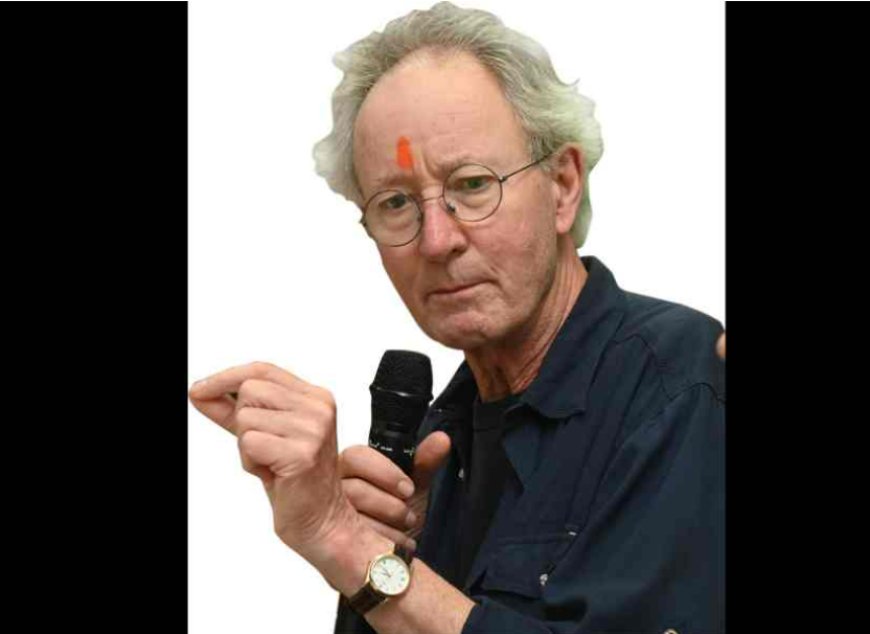Rolf de Heer's 'The Survival of Kindness': An Unconventional Journey into Post-Apocalyptic Allegory
A Conversation with Director Rolf de Heer on Casting Choices, Freedom, and Indigenous Representation

This week, 72-year-old Dutch-Australian director Rolf de Heer made his first trip to Calcutta, bringing his 2022 film The Survival of Kindness with him. Currently playing at the 29th Kolkata International Film Festival (KIFF), the film follows a refugee from the Democratic Republic of the Congo who is now living in Australia. The protagonist of the film is not an actor. In addition to being a compelling story about the concepts of freedom and captivity, Heer's post-apocalyptic film also serves as an allegory against racism. Heer chatted with t2oS about the movie and other topics while standing outside the screening.
The main characters in your movies are always unusual—they could be a child who is silent, an individual with cerebral palsy, or, in The Survival of Kindness, a person who has never attended a movie theater. Was the decision made on purpose?
Since I cannot afford it, I know that if I choose a child, they will never be a professional actor. It is a Black woman in this instance. Although there are many accomplished Black women actors, the inexperienced actor performed the best in the way we were shooting the movie. When I meet someone who has never acted, I begin to consider what is going on behind their closed eyes. The main character of The Survival of Kindness, Mwajemi (Hussein), was a Congolese refugee who had a lot of life experiences that affected him profoundly as an adult. She had a rich history of life. I reasoned that it might be possible if we can trust one another, and that was the role. She succeeded, and she succeeded magnificently. She was amazing in her first movie.
Even your other characters in The Survival of Kindness lack names, except for Black Woman, your protagonist. Why is that the case?
since there is no particular nation or period of time where the story is set. It is more widely applicable. It concerns all of us. If it had a name, people might be able to get away with believing that this is her story rather than mine.
The film opens with the eerie image of a Black woman who is stranded in a desert and locked in a cage. This image appears repeatedly throughout the film.Could you explain the picture more?
When I thought of that picture, it was of a Black man. It was Peter Djigirr, a close friend of mine with whom I have collaborated on several projects. He was left alone in a cage on a trailer. The image didn't leave my head once it appeared; I'm not sure where it originated from or why. I then got to work using it. We had to find a new protagonist because he was unable to work on the movie at that time.
The post-apocalyptic world in which the movie is set alternates between concepts of freedom and captivity. What gave you the idea to write a story about a dystopian post-apocalyptic society, and what does freedom mean to you?
Not specifically, but it is the best way to tell this story. Nothing special for a post-apocalyptic backdrop was in my possession. With the exception of telling a story against this backdrop, which I want to do well.
It's strange to be free. Although we believe it to be a certain thing, it is not. I recall that communist China used to be totally communist. People there used to say that it was a horrible place with no freedom, but then someone from China would say, "I feel safe to walk home at night," which is a freedom I don't have in Australia, and it was true." Thus, what freedom means to each of us varies.
After ten years, you made your big-screen comeback with this movie. Why did it take you so long to return to the movie theaters?
I traveled the world for two years after Charlie's Country was shot in order to promote the movie. That is the way it transpired. I worked on a project I was really passionate about for three years before I was able to return to filmmaking. During this time, the Covid pandemic also occurred.
In your films, humor is a key component. The story's unexpected hint of humor stood out amidst the gore of a movie like The Survival of Kindness. What are your thoughts on humor?
In any movie, it is crucial. I believe that laughter is the only thing that can truly allow an audience to relax and take a breath. There was a movie called Ten: Murder Island, I seem to recall. It was a serious topic at first, but then they cracked up a joke, and someone said, "Stop, someone is farting too much." It was a relief. The aboriginal people laugh a great deal. Thus, it's best not to take anything too seriously. There must be enjoyable entertainment for the audience.
Which problems currently require attention within Australia's indigenous community?
Whatever you call it, there's a problem. The belief held by White people that they are superior to Aboriginal people is the main problem, though.
Making movies about Native Americans has never been easy. Did your low-budget filmmaking approach facilitate the process?
I find big-budget movies to be really annoying. Money causes people to become very angsty. Along with other things, you are compelled to work longer hours. I find it very challenging to make a single film. If making movies turns into a career for me, I'll give up since it's difficult to pursue a passion like filmmaking as a career. They wanted me to remake one of my movies over in America. "You are welcome to do it yourself, but even if you give me five million rupees, I am not doing it," I said to them.
Except for the headline, this story has not been edited by Press Time staff and has been published from a syndicated feed.



























































